
Admin News
Dear CIS Community,
Congratulations on making it through week two of our remote learning journey! I hope you are all feeling more confident with your role in the process now, whether it is helping your children or being the active learner as a student. Students, keep developing your Approaches to Learning (ATL) skills so as to enable you to get the most out of the learning opportunities you are being provided.
For those of you who are interested in a comprehensive coverage of the current Covid-19 situation, here is a good collection of lecture slides covering science, health policies and economics. It is titled The Economics of a Pandemic: The Case of Covid-19 and is by Paolo Surico and Andrea Galeotti, Professors of Economics at London Business School.
As per my email to your registered addresses yesterday, Cebu will be entering a phase of Enhanced Community Quarantine conditions as directed by the City Mayor, Mr. Labella from noon on Saturday. To reiterate the key message in the email on how this will impact CIS, we will continue with our remote learning protocol as planned, but with the order extending our remote learning after Easter break to April 28, unless the order is lifted. (More details on this will be sent at later date.)
Enjoy your last week of learning before the Easter Break (April 6-13) next week. We will be providing you with some ideas for what you might consider doing over the break, as this will probably be your first forced “staycation” in your own home here in Cebu! Perhaps you could also start considering what activities you might like to do to make good use of your time and avoid feeling too housebound.
Lastly, please keep in mind that while it is inconvenient, the purpose of executive order conditions are to try to keep us collectively as safe as possible while the global community attempt to reign in the pandemic. Please consider how you might help other members of our community over this time, such as calling to check in on them. If you are having difficulties or are feeling down, do not hesitate to reach out to other families, teachers or admin for support. We are a family community and we care about each one of you. Take care and stay safe!
Warm regards,
Dr Gwyn Underwood
CIS Superintendent
Elementary School News
by Mr. Glenn Davies, Elementary School Principal & PYP Coordinator
Dear Elementary Community,
You all need to be honored and congratulated for the way in which each family has adjusted to the rapid changes placed upon us in the previous two weeks. It has been incredibly challenging for each parent, child and teacher, yet we have all worked together as a community to find solutions that are working. Thank you.
The CIS elementary school teachers are reviewing and modifying their teaching approaches every few days in response to their own learning, and to your feedback. The most effective way to communicate changes you feel may work better for you and your child is to communicate these needs honestly and constructively directly to the teacher. They too are learning to teach through a new platform and are spending many hours fine tuning their approaches. Your feedback is valuable to them.
In this remote learning addition of the CIS Newsflash I have asked each grade level to share some learning that has been happening over the past week. Let’s see what everyone has been up to.
Click on the corresponding tabs for each Grade level!
The Early Years
The Early Years students have adjusted to their new home-learning routine and are continuously active and engaged in their learning due to the wonderful support given at home. With the aim of continuously developing physical, social and academic skills, the teachers have continued to provide a range of balanced activities that include sensory, digital and kinesthetic play. A few of the highlights of this week’s home learning have been the teamwork and collaboration our students, parents and teachers have shown while responding to the learning engagements.
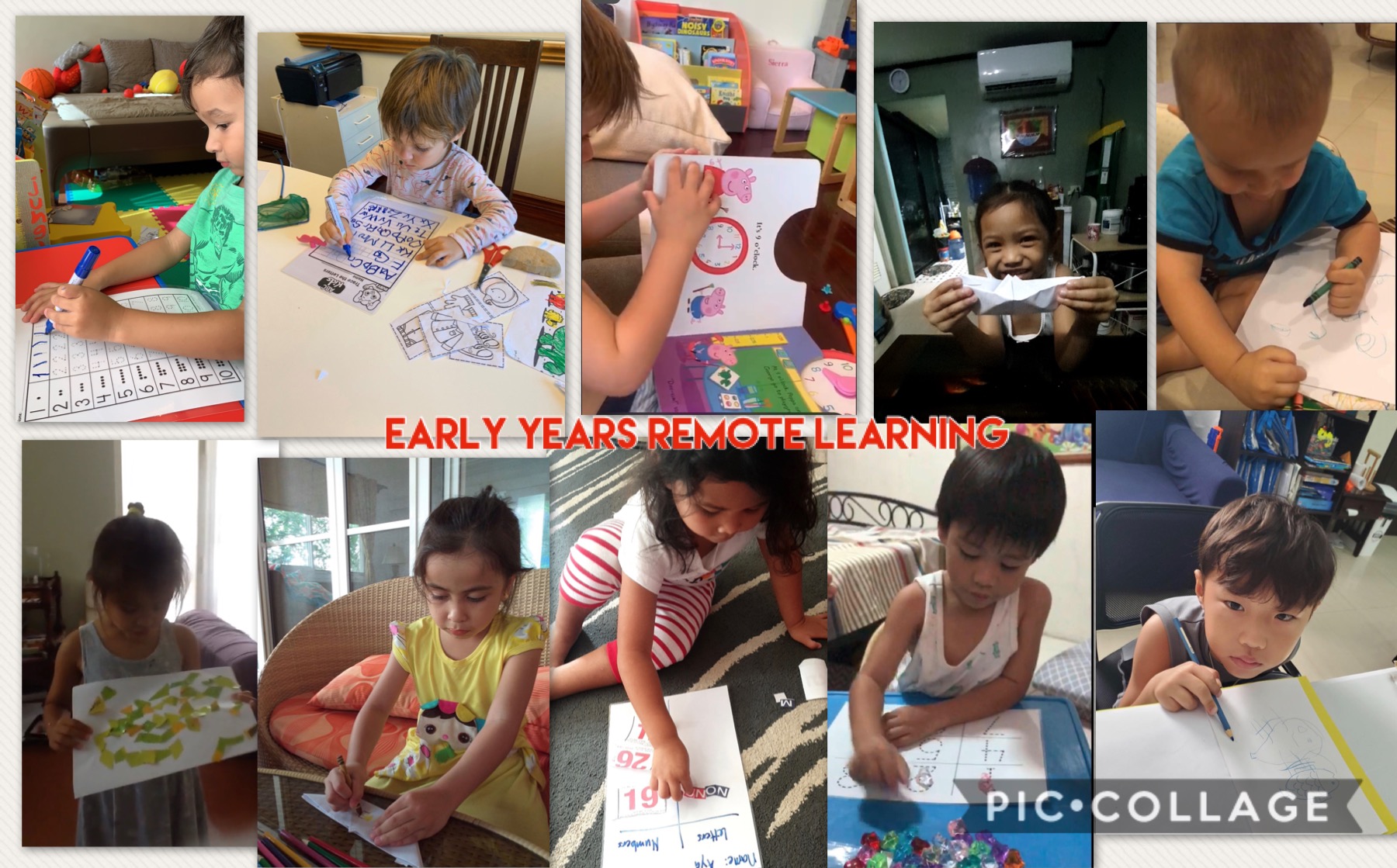
KG and Grade 1 Learners
This week KG and Grade 1 students used their communication skills to explore the story of The Gingerbread Man. The students used their creative thinking skills to make costumes out of recycled materials. They have also focused on keeping up with their literacy skills in reading and writing by making books. The teachers have enjoyed seeing their students (and parents) playing different roles from the story of The Gingerbread Man through the videos and photos that have been shared. Students have had to utilize their self-management and creative thinking skills when making their puppets or costumes. It has been a pleasure for teachers to see how much fun it was to act out the story working together with different family members.
Grade 2 Learners
The Grade 2 students have been engaged and enthusiastic since our remote learning experience began, demonstrating great ATL skills and IB Learner Profile attributes each day! Meaningful learning has been sustained through the use of daily teacher-made instructional videos, activities, online resources, and lots and lots of individualized constructive feedback.
This past week, the Grade 2 students continued to develop their persuasive writing skills by writing letters back and forth with their teachers and explored fractions and probability through interactive games. As well, they tuned into their new Unit of Inquiry (UOI) of Where We Are In Place and Time. Prompted by teacher read-alouds and questions, the Grade 2 Explorers inquired into the Norsemen (Vikings) to understand more about one group of early explorers. In order to synthesize key information and represent their new knowledge and understanding of why people decide to explore, they then created informative dioramas that they shared with their classmates on Google Hangouts Video Call. As very reflective learners, the students gave each other feedback and suggestions for further improvement on their dioramas.
Remote learning has been a great opportunity for students to continue collaborating with and inspiring each other outside of their usual classroom environment… and for the teachers, too, who have enjoyed finding creative ways to help keep student interest and engagement levels high!
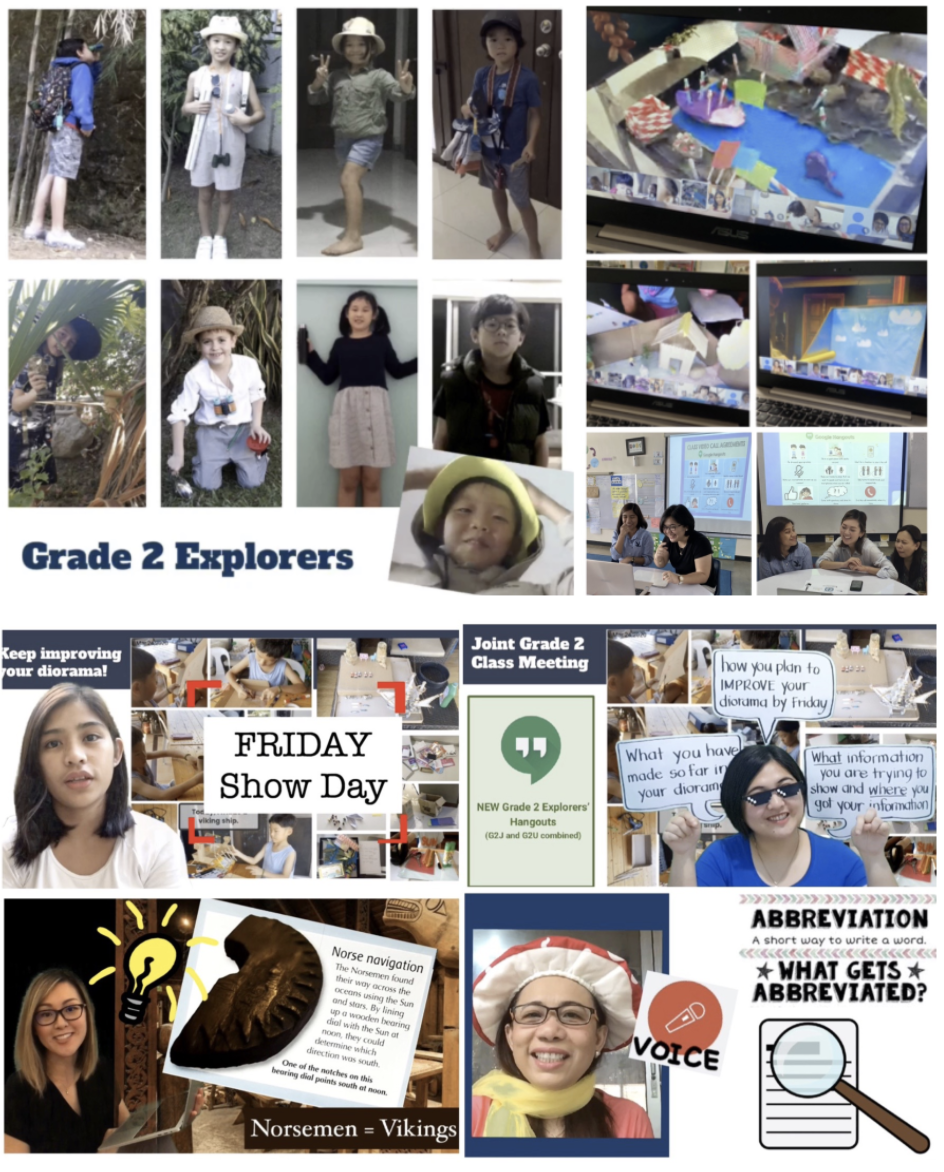
Grade 3 Learners
Grade 3 have been practicing to be explorers both at home and online, searching for items that they can use for math, building models at home, and writing explorer journals about their tours into an online world. They chose what kind of explorer they would like to be (an archaeologist, a zoologist, a park ranger or a natural historian) and set off to explore various online tours of parks and museums. Here are a few examples of their explorer journals and models.
Grade 4 Learning
Grade 4 had a variety of projects and learning engagements this week. Through their unit of inquiry, they continued tuning in to their new unit Sharing the Planet unit and identified different types of energy sources that are used, including building windmills to show off their crafting skills. They also continued to explore their other simultaneous unit, How the World Works, following the scientific method to create their own science experiments. In addition to this, Grade 4 students practiced their writing skills, explored their home to identify angles, did math exercises, wrote poetry, created surveys, made artwork, played music, and practiced speaking different languages. Grade 4 students have shown their resilience and flexibility, adjusting to a new situation quickly and have shown great communication skills, taking advantage of the available media they have to ask each other and teachers questions, comment on each other’s work, record audio, and make videos.
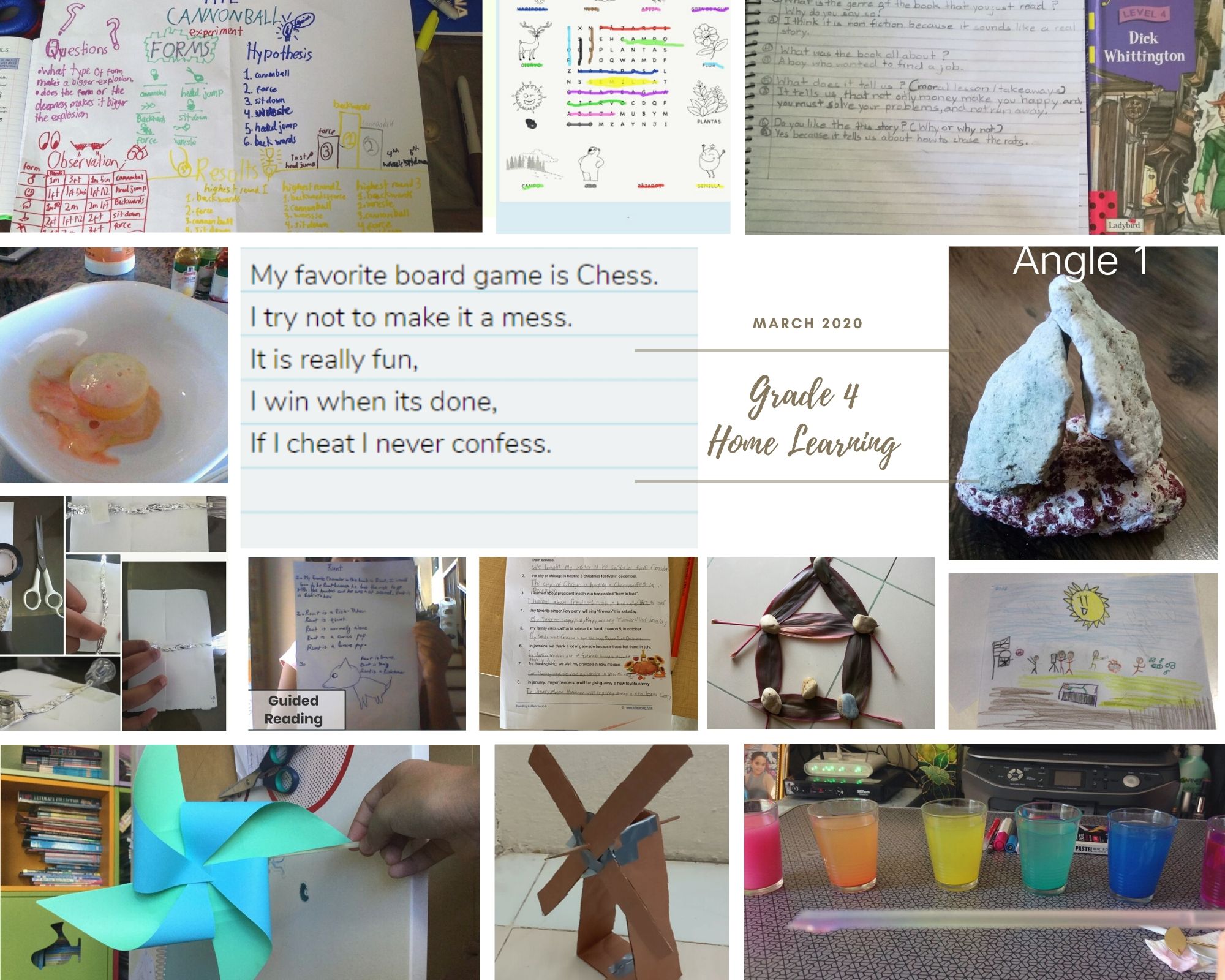
Grade 5 Learning
Grade 5 students have been doing an outstanding job of developing effective learning routines at home. It has been pleasing to see growing confidence with students managing their learning, taking initiative with problem-solving, and increasing their independence with self-management.
Students are supporting each other and looking for ways to build community ‘from a distance’. They have a new appreciation for face-to-face conversations and personal connection through the online tools available. There have been many messages flowing back and forth as students further develop their thinking and ‘go deeper’ with their learning in response to teacher feedback on assignments and tasks.
Students are working hard to continue preparations for their PYP exhibition. This has brought out some very creative and artistic ideas from some students.
Keeping Physical
PE Remote Learning focuses on student’s engagement in varied physical activities which will help them to be active, and most importantly to have fun! Watching the videos and reading the responses of the students has been rewarding, knowing that they enjoyed performing the different tasks in PE. I am also very thankful for the parents for being so supportive when it comes to facilitating their children in doing the activities.

Learning Through Art
The Grade 2 students have been creating Underwater Doodles. This activity started by making a doodle with their eyes closed. Next, they were asked to draw objects into the doodle, using their imaginations (eyes open this time!). It has been exciting to see the creative ideas students have developed. Next week, they will color their creations, and I can’t wait to see what they will look like. This learning engagement has a wonderful balance of not being too serious, while also requiring students to think deeply, make connections and use their illustrative skills.
Learning in Music
Elementary band students are currently learning a number of band arrangements including the theme from Beethoven’s Ninth Symphony (Ode to Joy). They are also learning about the life of Beethoven and his contributions to music. In this week’s lesson, they learned about Beethoven’s childhood, his rise to fame, and his struggle with deafness. Ask your child what they know about Ludwig van Beethoven and have them test their knowledge of Beethoven’s best known themes through this interactive Google Doodle:
https://www.google.com/doodles/celebrating-ludwig-van-beethovens-245th-year
Have fun and try to get all four themes correct!

Socio-Emotional Guidance Class
Students have been accessing learning engagements found in the Seesaw Library to explore how their feelings can impact them. Since the theme this month is focused on feelings, students were asked how they are being impacted by the remote learning environment. Many students expressed positive feelings of being happy, excited, with some sharing smiley faces. Some of the student quotes have been “I am able to do work at home with my family”, “I am happy because I can play with my friends”, and “I am happy mom playing with me”.
We have one more week of remote learning before the April break begins, so there will be a break in remote learning from Monday 6th April to Monday 13th April. Teachers are preparing a range of activities that students can do to keep them busy during the break. One document that you may find very useful is Mr. Eerik’s list of offline Boredom Breakers. I encourage you to work through this list.
Middle and High School News
by Mr. Dale Wood, Middle and High School Principal
SAMR Model Defined and Practiced
This past week was scheduled to be our annual STEAM (Science, Technology, Engineering, Arts, Math) week led by our Maths and Science Departments. Even though all of our events for this special week have had to be postponed, our use of technology (the T in STEAM) has ironically come to the forefront due to our need for remote learning. One of the unexpected silver-linings of the Covid-19 pandemic is that it has put us into a situation as educators where we have had to become much more adept at our use of technology tools in order to serve our students and meet their needs.
In light of this I wanted to share the SAMR model which was developed by Dr. Ruben Peuntedura to provide a continuum and a common language to help teachers evaluate how deeply and effectively they are incorporating technology within their classes. I wanted to take some time to share this model with you and explain how it is being put into practice by our teachers.
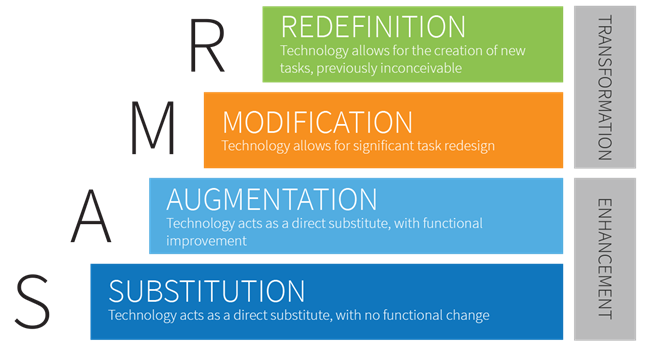
Substitution refers to using a newer tool to replace a traditional tool, for example, reading an online version of Kurt Vonnegut novel, Slaughterhouse Five, which is set in the context of the Firebombing of Dresden, Germany near the end of WWII, rather than a hard copy. Students taking notes in a Google doc rather than in Microsoft Word is another example.
In the Augmentation stage additional features are made available through the use of technology. For example, students could read an online version of Slaughterhouse Five with hyperlinked notes. Students can open up the links to deepen their understanding of features like allusions or access important contextual information regarding Dresden, WWII, etc. These notes could include images and video as well, making this much more powerful than traditional footnotes.
Student work created in Google can be enhanced through features such as auto saving the doc as well as auto-sharing and auto-linking in the cloud.
Modification is the level where the technology is used not to simply replace the same task using different tools, but rather, allows for the redesigning of aspects of the task to transform student learning. A shared google doc, for example, allows students to to collaborate and share ideas and also record the conversation for later review and revision. The “commenting” service in Google Classroom would also allow the teacher to collaborate and share feedback with the class.
Finally, the Redefinition stage is where technology allows for learning tasks and experiences which would have been inconceivable without those tools. An example of this would be students collaborating with another class of students in the country where the text is set (in this case, Germany). Our students would be able to interact with those other students delving more deeply into aspects of the text to gain a much fuller and deeper appreciation. Our students could share how the text affected them and the German students could share how the firebombing of Dresden is taught in their schools and how it impacts their community today.
Note the difference in these four levels, that the lower two levels are focused on the Enhancement of learning while the higher two are focused on the Transformation of student learning. It is not that these two higher levels of the SAMR model are necessarily superior to the two enhancement levels, as sometimes Substitution, for example, reading an online version of the novel students are studying in English class can the most appropriate level for some activities. However, the Transformation levels allow students to harness technology and channel their creativity through the tools available to produce work that would be inconceivable without it.
Here are just a few examples of how teachers are reaching the different levels of the SAMR model in their classes:
Grade 7 Design class is addressing the Covid-19 situation in a very practical way as students have been asked to design products from the materials they have available at home in light of the quarantine. The statement of inquiry for their unit is that Great turning points in humankind challenge us to adapt to new changes and identify problems to develop solutions. Not only is this project highly relevant, but students are also using technology to create and share their products with the teacher and other students. Students are utilizing tools to create online flowcharts and explore designs from various angles without needing to manually create multiple images.
Our Grade 10 EAL class is accessing virtual tours of prominent American art museums which are all closed due to Covid-19. The museums themselves are closed, but Google has partnered with them to create these virtual tours; students are able to visit not just one, but twelve of these museums, so they could visit one museum in New York and then a few minutes later visit one in Los Angeles. Their task is to browse through one of the museums to locate a piece of art that appeals to each of them and use compare/contrast language to respond to the work they have chosen.
In our World Languages classes, teachers are using computer technology to offer an effective tool to perform tasks which we would typically find in the world language classrooms. In Mandarin classes teachers are actively conferencing with students, using group calling to practice oral skills in their target language. Spanish 10 class, in replacement of class participation, asked students to create videos explaining the use of grammar rules and verb tenses.
English IBHL this week engaged in a group discussion using a shared Google Doc focusing on one of Nathaniel Hawthorne’s short stories so the teacher might give feedback on student contributions. Students discussed “The Birth-Mark” and were given some suggestions for features to explore such as theme, imagery, symbols, etc. Students were also encouraged to make comparisons with the other works studied in this course (Perfume, A Doll’s House) or other works of Hawthorne read thus far.
The shared Google doc platform allows all students to function in small groups, allowing for much more contribution from each one. These discussions may take place simultaneously since they are doing so in remote groupings, and this also allows time for the teacher to carefully analyze the quality of the ideas at a later time.
Teachers also continue to experiment with new technology tools to help facilitate student learning such as Edpuzzle and Goformative. Edpuzzle allows teachers to pause videos and ask questions of students before the video continues, it also tracks students to monitor whether they have watched the video and which parts they have re-watched. GoFormative allows teachers to upload multiple media tasks, corrects student work (when in short answer format), and shows the individual working of the whole class at the same time.
Finally, the Newsflash itself provides an example of the SAMR model in practice and shows how technology does more than just replace older forms of communication. When I was in high school I was part of a journalism class that met one period each day consisting of 15 hard-working 11th and 12th graders each of whom produced an article for each edition. We had an award winning newspaper, but we were only able to print every other week and publish only about 300 copies per edition. Compare that with what we can do now. We are able to provide weekly news about our school including thoughts from administrators and teachers. We add links to other articles that may be of interest. We include pictures and video links to enhance the reading. We provide an opportunity for our students to have a voice and make regular contributions by linking Dragon’s Print within the blog. Finally, we are able to share the content with friends, family, and colleagues back in our home countries.
Parents, I encourage you to take a moment and ask your children to show you what they are learning in their classes… and how they are learning it. This may be a wonderful experience for you to see what and how your children are learning in the midst of this situation.
G12 IB DP Visual Arts Virtual Exhibition
by Mr. Jessie Saclo, IB DP Art Teacher
As announced, here is the link to our G12 IBDP Visual Arts students’ virtual gallery – https://bit.ly/2QH33OS

This year’s seniors worked very hard to complete the requirements of the visual arts course and I am proud to present them to you. This site would work and adjust to any device you may use.
There is a comment section on the home page, the seniors would appreciate one from you. Thank you for all your support.
Enjoy viewing!
Class of 2020 College & University Acceptances
Click on the image to enlarge the photo.
Dragon’s News

We’re now two weeks into remote learning and we’re sure that you’ve settled into a study-from-home routine by now. However, we all need brain breaks from time to time. Regina L. and Nathan C. are here to recommend some films you can enjoy after doing your work. Conversely, if you’ve been struggling to focus on your classes because of too many distractions, they also have some great apps that can help you with your learning! Check out their recs on https://dragonsprint.cis.edu.
PTA News
We hope you are all enjoying the time at home with your families! As we look forward to the day when we can gather as a community on campus again, the PTA Board of Officers is releasing a form (please check your email) in which you can rank your preferences for projects that will receive PTA money. These projects include requests from teachers as part of the Student Learning Enhancement Fund (SLEF) and also a project that was initiated by the PTA Board.
Please also join the PTA group page on Facebook https://www.facebook.com/groups/951442071649478/ so we can continue to communicate effectively. Stay safe and healthy!
|
|||||||



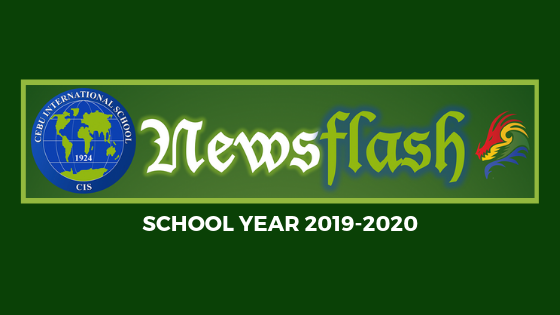

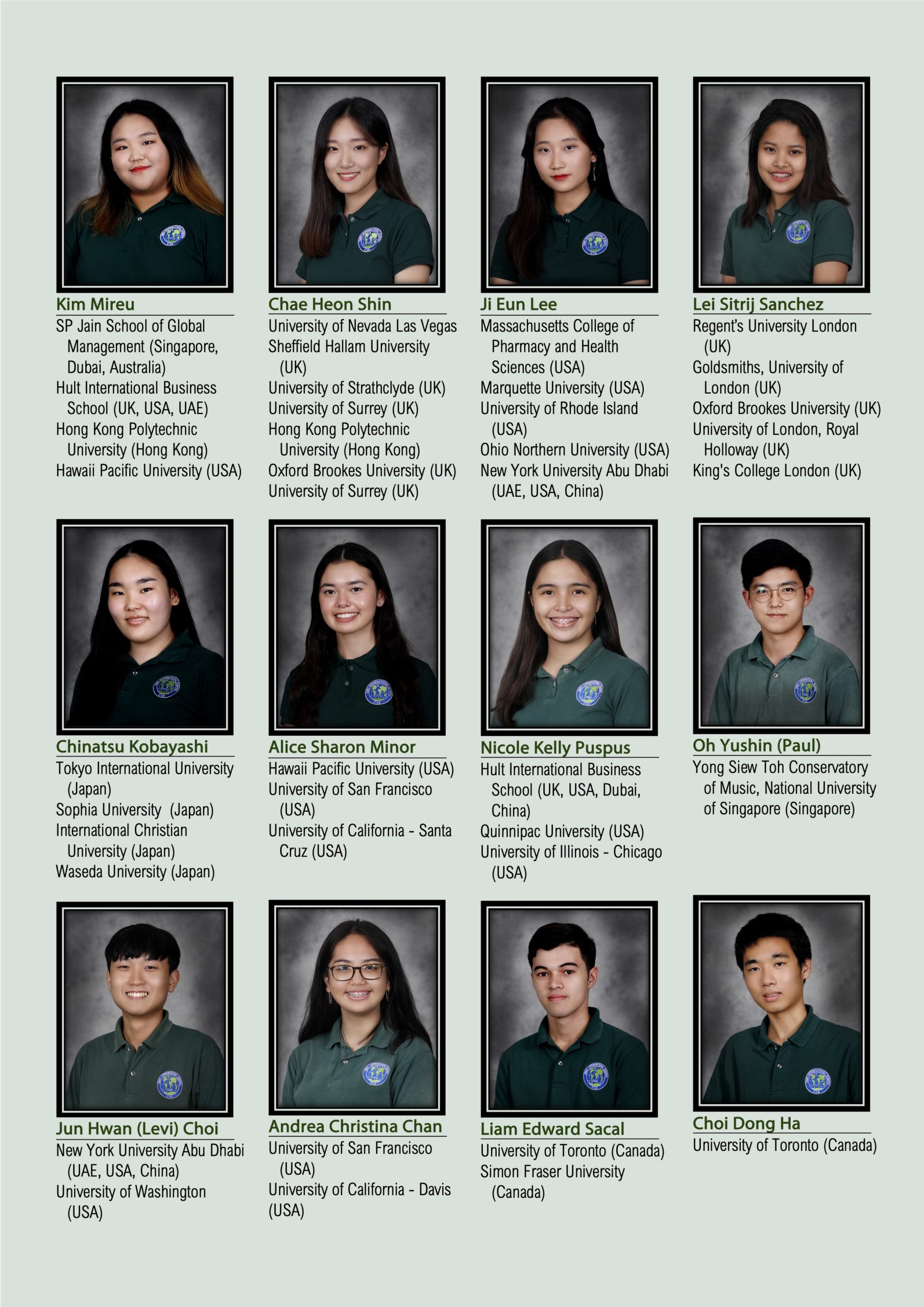
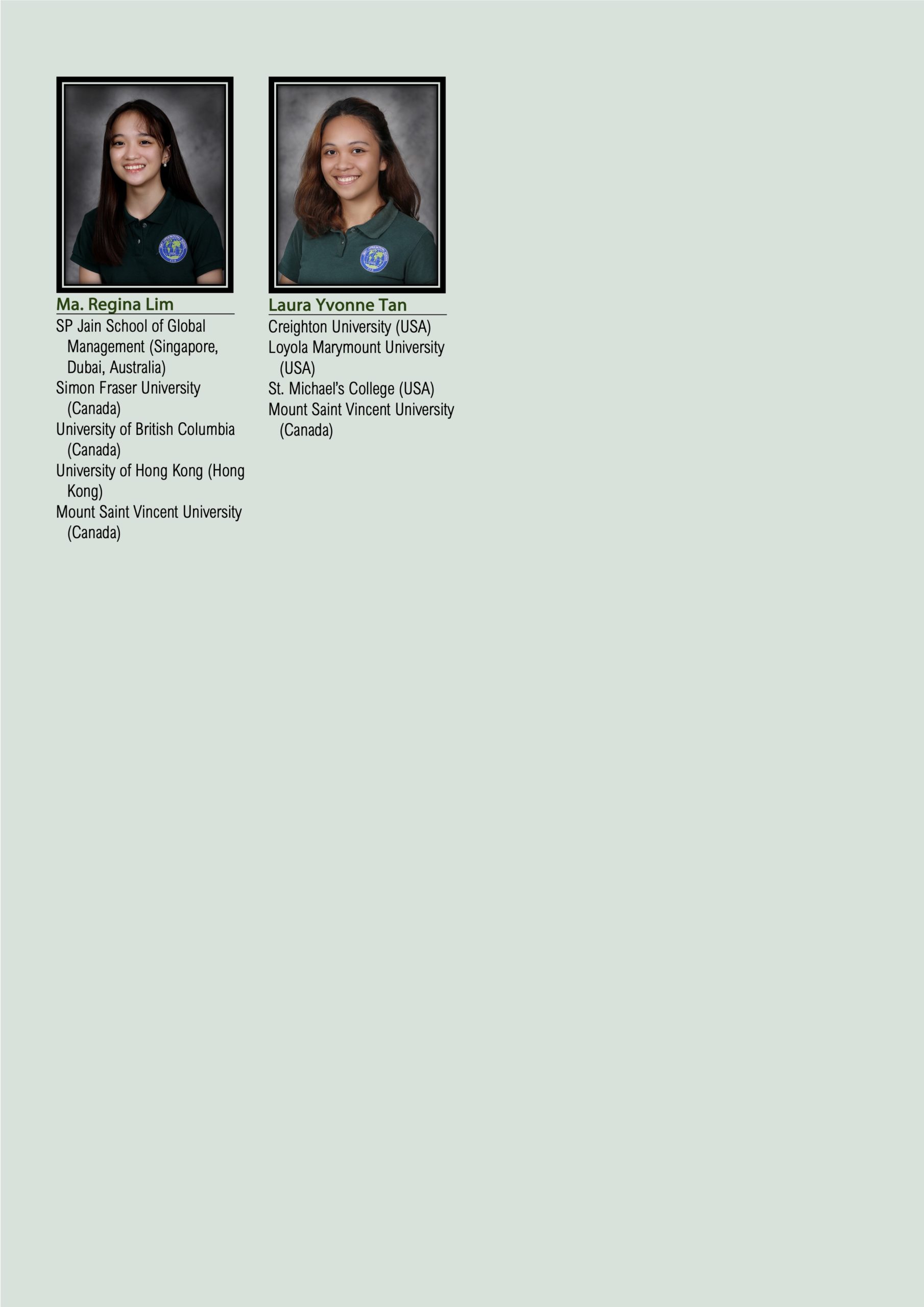

fantasy sex cams sexcams00.club sex cams in staten island ny.